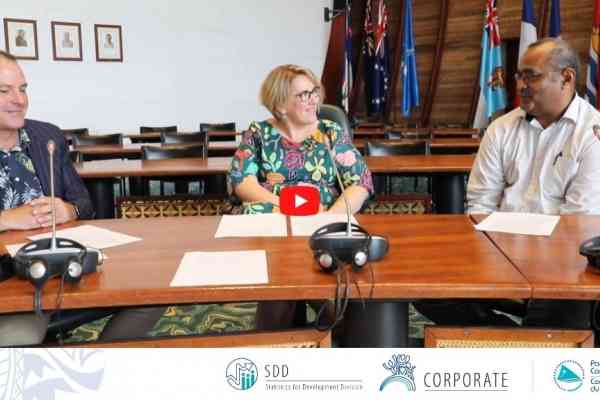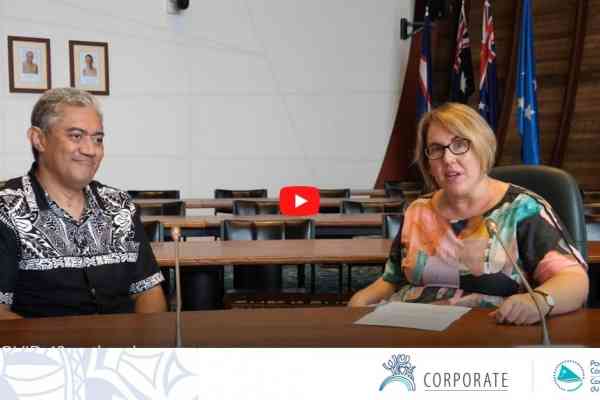The Pacific Islands Literacy and Numeracy Assessment (PILNA) is a tool used to measure the literacy and numeracy skills of Year 4 and Year 6 students across the Pacific region.
Administered by SPC’s Educational Quality and Assessment Programme, the PILNA results are released every three years and provide the 15 participating Pacific countries with a measurement of regional standards based on a common scale.
Australia is a major supporter of the PILNA report and SPC’s work to strengthen education systems in the Pacific.
In this SPC Talks, Ms Annelise Young , Australian Consul-General in New Caledonia and Dr. Michelle Belisle, Director of SPC’s Educational Quality and Assessment Programme, discuss the 2021 PILNA regional report.
Annelise Young
Hi Michelle, thanks for your time today, what do the PILNA results tell us about the state of education in the Pacific?
Dr. Michelle Belisle
The PILNA results give us a number of different kinds of information about education in the Pacific, we have three instruments that are cognitive in nature. We measure students’ proficiency in reading, their proficiency in numeracy, and then we measure their performance on a writing task. So that gives us a sense of whether or not students are meeting the minimum benchmarks that the 15 English speaking Pacific Island countries and territories set together.
What we can tell from the regional results in 2021, in particular, is that while there was a trajectory upwards, the impact of all of the events leading up to 2021, has caused some significant challenges for year four students, more so than the year six students, although they too saw less favourable performances in 2021 than they had in the previous administration of the PILNA in 2018.
So that gives us a bit of a sense of how the COVID-19 pandemic and epidemics and disasters that were in the region impacted on students and student learning.
We also have contextual questionnaires that are responded to by students, teachers and school leaders that give us a sense of what's going on with students, teachers, principals, and education systems that helps us to understand the results.
From that we can see that a vast numbers of our teachers and our school leaders are in situations of incredible stress, as a result of the past couple of years. We hear from students, that fully two thirds of them have missed considerable amounts of school for a variety of reasons across that time period, sometimes due to the pandemic, but sometimes for other reasons as well. And that is taking a toll on their learning and it's also showing up as anxiety that affects their well being.
That's a new piece of information that we didn’t previously have and we've been able to capture that through the PILNA results.
We also have a really good sense of where students are struggling in terms of misconceptions or gaps in their learning. Because when we do PILNA, we don't just score things as correct or incorrect, we provide coding that observes what students have done on the PILNA. So we're not only able to see where students have gotten an incorrect response, for example, but if there is a consistent kind of error being made. So if students are working on a word problem, for example, in the numeracy assessment, and we see that consistently, they're using the wrong operation. We're able to see where that is happening and we're able to connect that up to some of the information that students have provided about school time missed, about teacher background, teacher preparation, all of those different things. With this we're able to get a more connected picture of not only how students are performing, but potentially some of the factors that are influencing their performance and that is of huge value to education systems, Ministries, schools, regional organisations, because it provides an insight into where some of the issues and challenges can be addressed.
Annelise Young
How do these results inform SPC’s work in the region?
Dr. Michelle Belisle
There are a number of ways most directly, of course, is the work of SPC’s Educational Quality and Assessment Programme (EQAP). Because Ministries of Education look to those, every three-year results, to help see where things are tracking, and to understand where they need additional supports. SPC provides some of that advice and support. We also help Ministries provide the data that help them to seek supports in other places, whether within their own governments or from external organisations.
It also informs SPC’s wider work because the contextual data that we collect about the situations that students, teachers and schools are facing, helps other parts of SPC to understand some of their development contexts.
Annelise Young
And how does PILNA share their results?
Dr. Michelle Belisle
At the regional level, the aggregated regional results are shared publicly through an interactive digital report. They're also shared in a variety of social media, media releases, and presentations to international and regional audiences. Then at the national level, each Ministry of Education receives their own national results also in an interactive web format, as well as the data files that go along with those results.
We also support countries in putting together efforts to explore their own data specifically to find answers to questions that they may pose.
Annelise Young
How does Australia contribute to SPC’s education work?
Dr. Michelle Belisle
Australia is probably the largest single partner in terms of programmatic support for the work that we do. And that programmatic support, goes to supporting PILNA as one of the pieces of work, but also our support to countries in their own national level assessment programmes.
Australia also supports through the Australian Council for Educational Research and its Global Educational Monitoring Centre who are our technical partners in the work that we do, mostly through PILNA, but also in several other areas as well. And that's another area where Australia is supporting our education work in the Pacific.
Annelise Young
Thank you so much Michelle for taking the time to step through all of that today and all the best with your important work.

